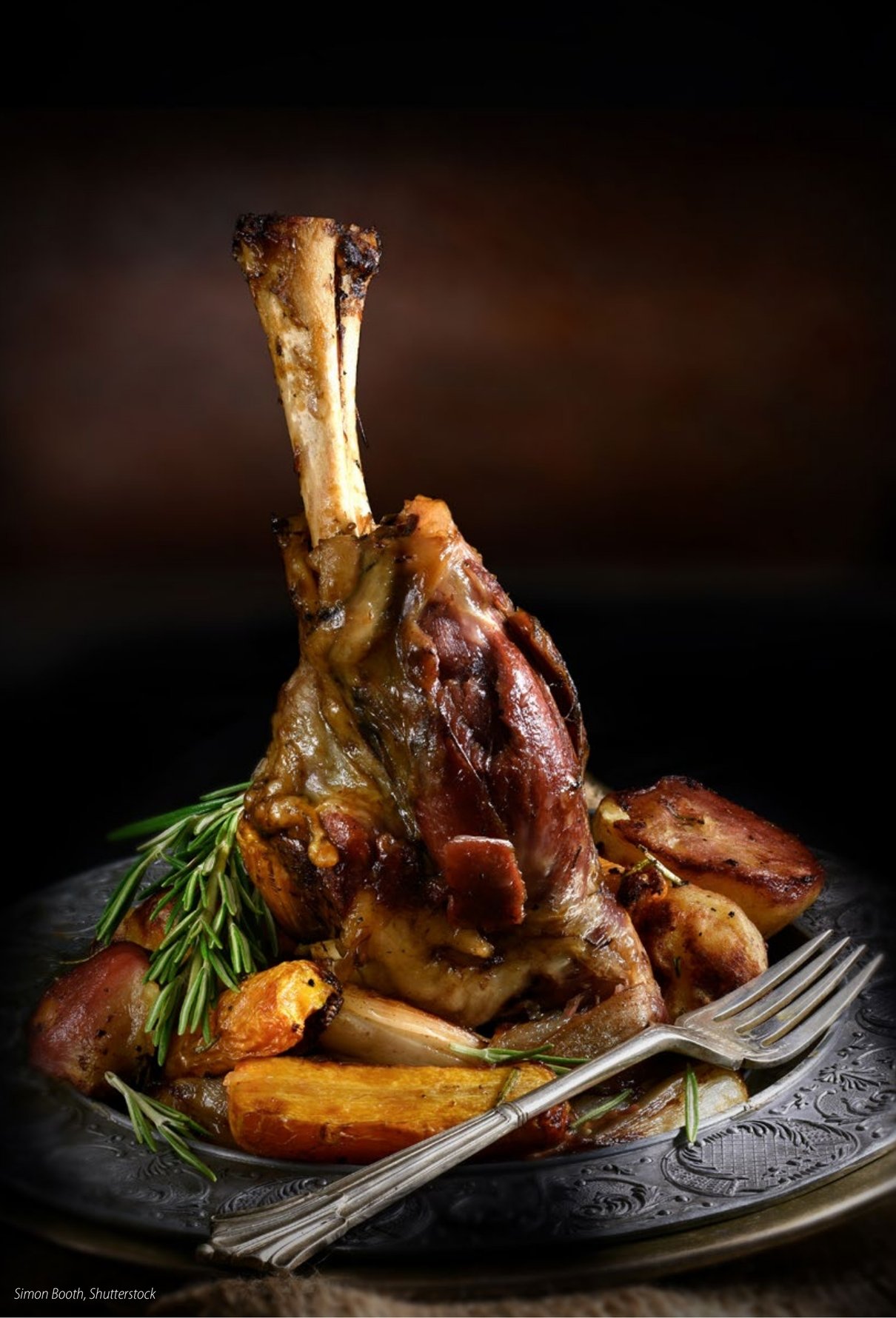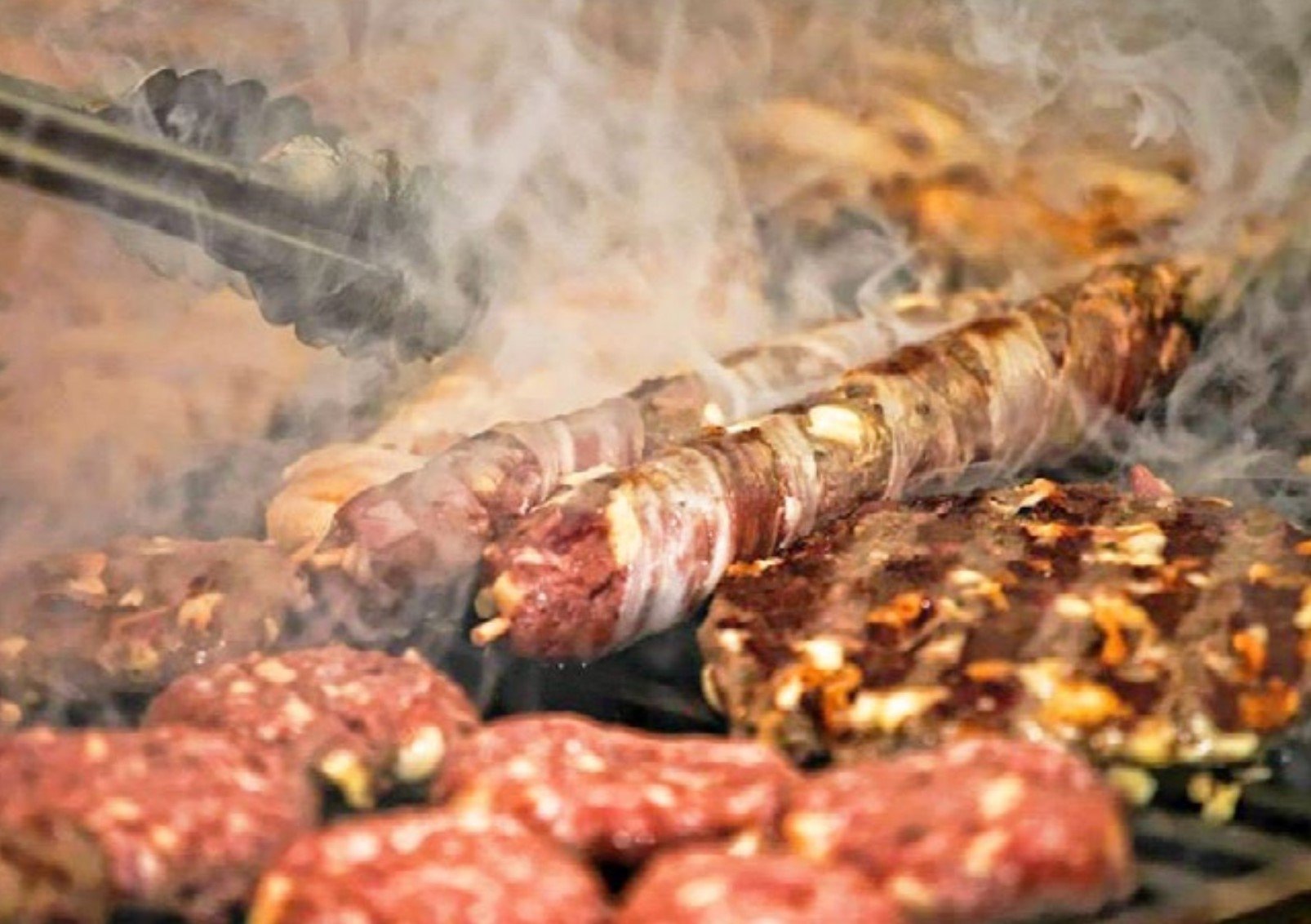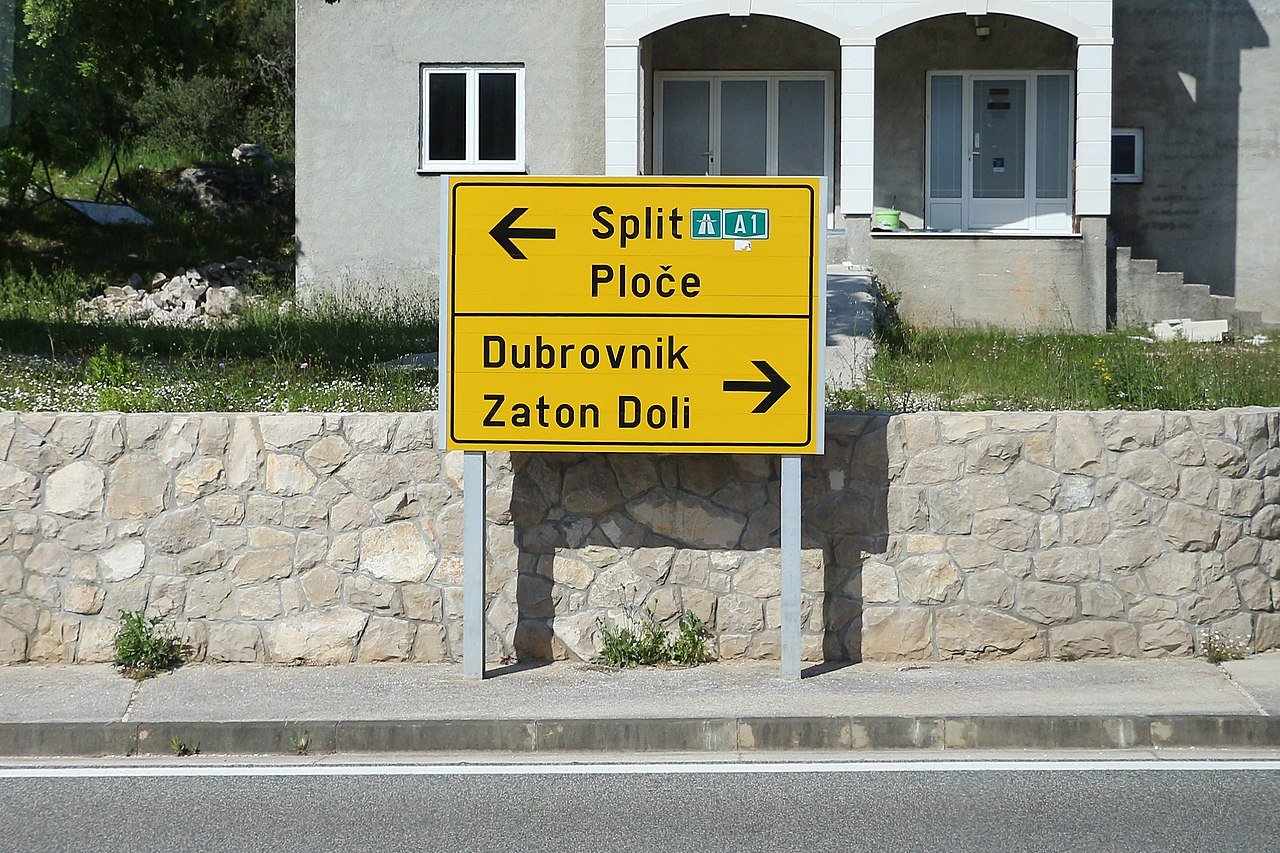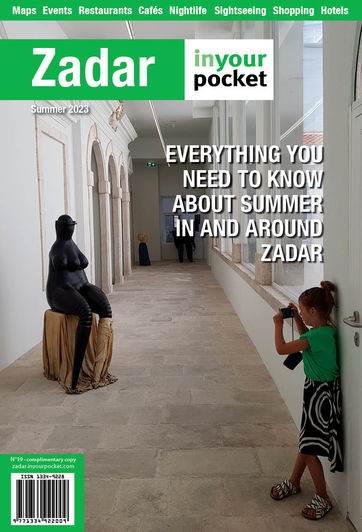If there is one thing that characterizes the roadside restaurant in Croatia, it is roast lamb. Many are the occasions when you will see a skewered beast slowly revolving over an open fire, set out in the car park of a dining establishment beside the highway.
Croatian drivers know which routes yield the tastiest meals: there's a tradition of lamb-roasting inland from the major Dalmatian cities, and also along much-travelled roads such as the old road between Zagreb and the coast.
Oddly, lamb is a speciality of the road, rather than the city, and for generations of Croats the chance of tucking in to a succulent hunk of sheep has been a central, almost ritualistic, part of a long cross-country journey. In a way the construction of new motorways has taken the fun out of these long-distance trips. Motorway service stations do not, as a rule, offer spit-roast meats alongside their other neatly packaged refreshments. Sticking to the old roads is very often the best way to find the best food.

Roast lamb is not available everywhere however and location is still important. Sheep are not common to the whole of Croatia, and there are specific places where they are an integral part of local cuisine. The prime areas where the animals are grazed are the plateaus just inland from the Adriatic sea. Key areas for spotting spit-roasting restaurants include the roads leading inland from Zadar, and that leads from Šibenik towards Trogir, passing through Donje polje, Vrpolje, and Boraja on the way. There are also plenty of establishments spread along the old road from central Croatia to the coast, which passes the Plitvice Lakes and crosses the Lika plateau before traversing inland Dalmatia.
The road from Split to Dugopolje used to be lined with spit-roast restaurants, but the construction of a new, faster highway dealt a blow to their traditional road-side trade. The fortress town of Klis, nevertheless, still boasts a couple of lamb-roasting establishments with country-wide reputations.
There are also certain Adriatic islands where sheep-rearing, rather than fishing, is central to local agriculture. These include Cres, Brač, Pag, and to a lesser extent Krk and Lošinj. Indeed it is on the Adriatic islands that livestock get to graze on a specific diet of grasses and aromatic herbs, their leaves covered in salty deposits from the sea breeze. Large parts of Pag are covered in sage, which gives a distinctive flavour to the lamb that is reared here.

Sheep-rearing islands also produce some fabulous cheeses - it is no surprise that many of Croatia's most celebrated, prize-winning cheeses come from the sage-munching sheep of Pag.
While the sheep economy still survives on islands like Pag and Cres, it has been eroded elsewhere by the appeal of other industries. The Kornati islands, nowadays celebrated for their stark bare beauty, were once the place where the farmers of Murter kept their sheep, building the dry-stone walls and isolated shepherds' huts that still define the islands' distinctive landscape. With an increasing number of Murter folk turning their attention to olive-growing, fishing or the tourist industry, however, they ceased to prioritise their flocks; a lot of the sheep on the Kornati today are effectively wild. Some families are returning to sheep-rearing, although the number of woolly beasts roaming the islands is nothing compared to what it was 20 or 30 years ago.
When it comes to lamb-based cuisine, it is the spit-roasting that has become predominant. Young lambs are placed on a spit to slowly revolve over an open fire; each carcass takes about one and a half hours roast. Salt is usually all that is added.

Roast lamb is usually sold by weight (a single portion is anywhere from 0.3 to 0.5 a kilo), and you will be served a selection of lean, fatty and on-the-bone cuts. Diners accustomed to eating lamb in neat slices might be disappointed; but this is the way that Croats like it, with plenty of succulent fat and crunchy crackling, and to be fair, their way of doing things is probably tastier than yours. You will also be given a knife and fork, although you'll probably end up using your fingers - scented towels may well be provided at the end of your meal. A side order of spring onion is considered essential.
Although spit-roast lamb occupies a significant space in the Croatian pyche, it is far from being the only lamb dish in the repertoire. Lamb chops can be grilled or fried; roast knuckle of lamb is a rare treat in some Dalmatian restaurants. Lamb goulash provides the ideal accompaniment to the hand-rolled pastas common to Krk, the Kvarner and Istria. One of the best-known (if not always widely available) specialities on the island of Brač is Vitalac, in which bits of lamb heart, liver, lungs and other squelchy body parts are wrapped in intestines and then put on the stove for a good roasting.
Vitalac was often eaten as a starter while diners waited for the rest of the lamb to be taken down from the skewer. The enduring presence of vitalac in a handful of Brač konobe reminds us that in traditional island societies there is no point in slaughtering an animal unless you were going to eat or use all of it, innards included. Lamb intestines are also used to wrap pršut and bacon to form, a traditional dish from the town of Skradin just inland from Šibenik. And if you are really serious about discovering everything that Croatian lamb has to offer, there is no better place to end your journey than in its entrails.





Comments